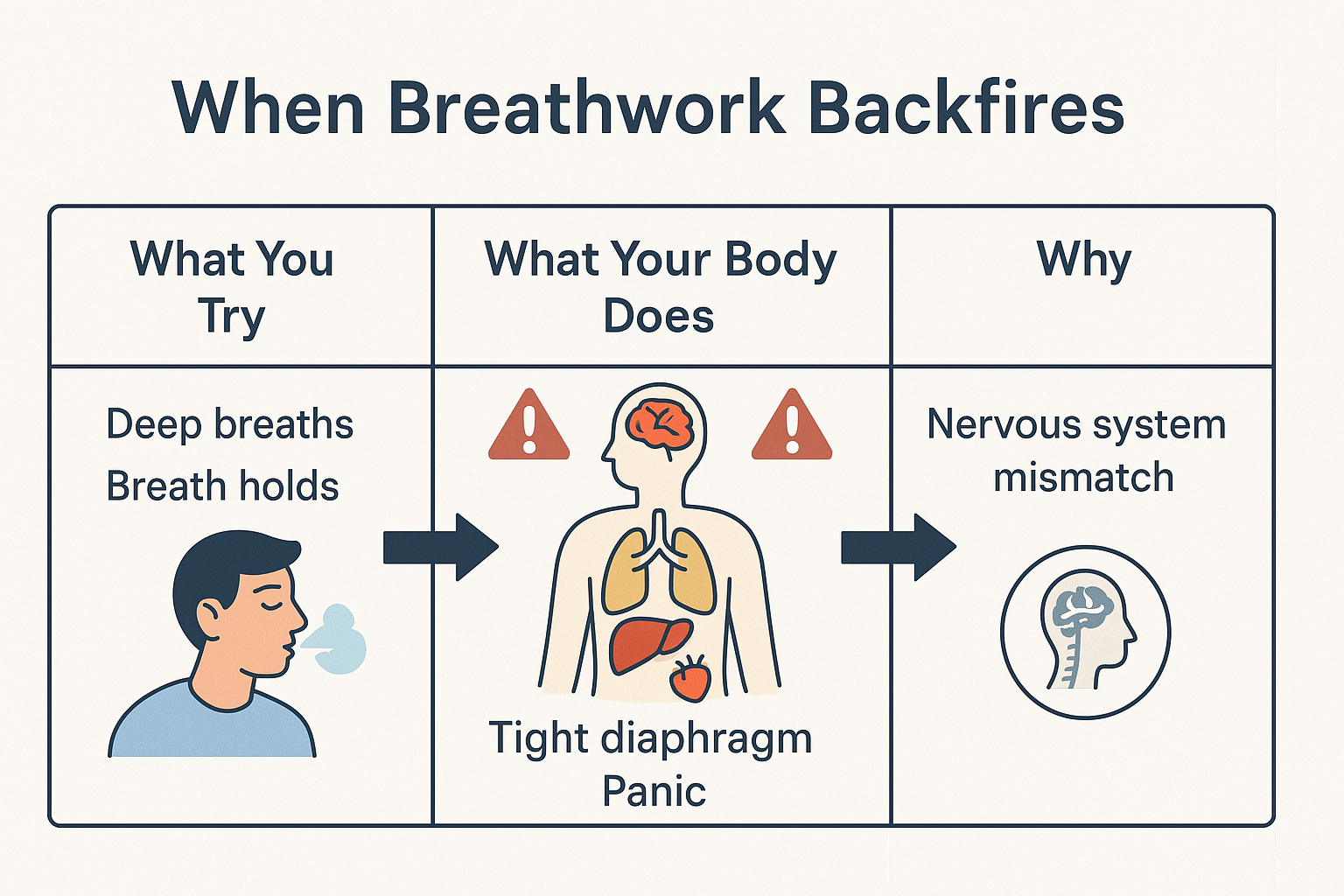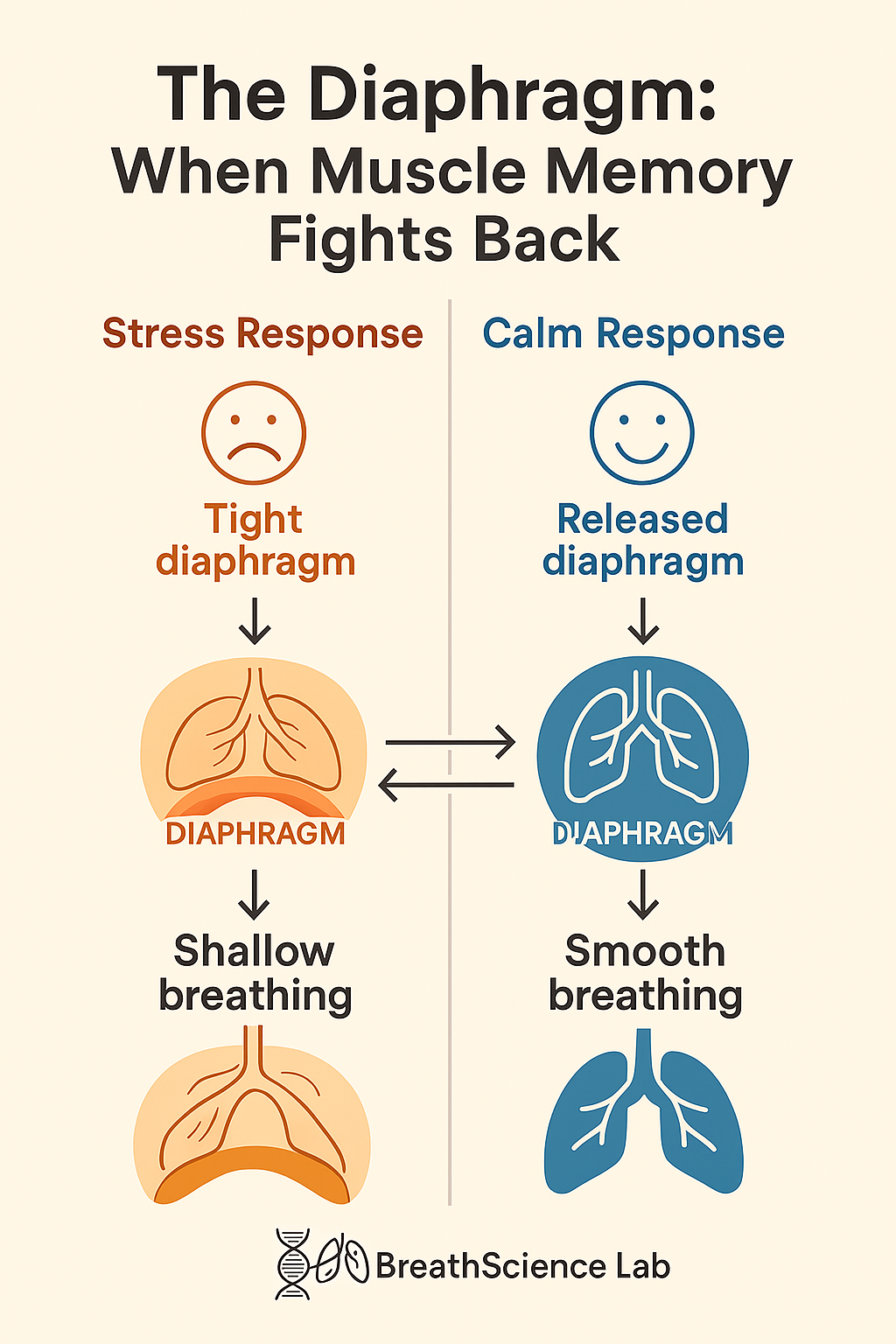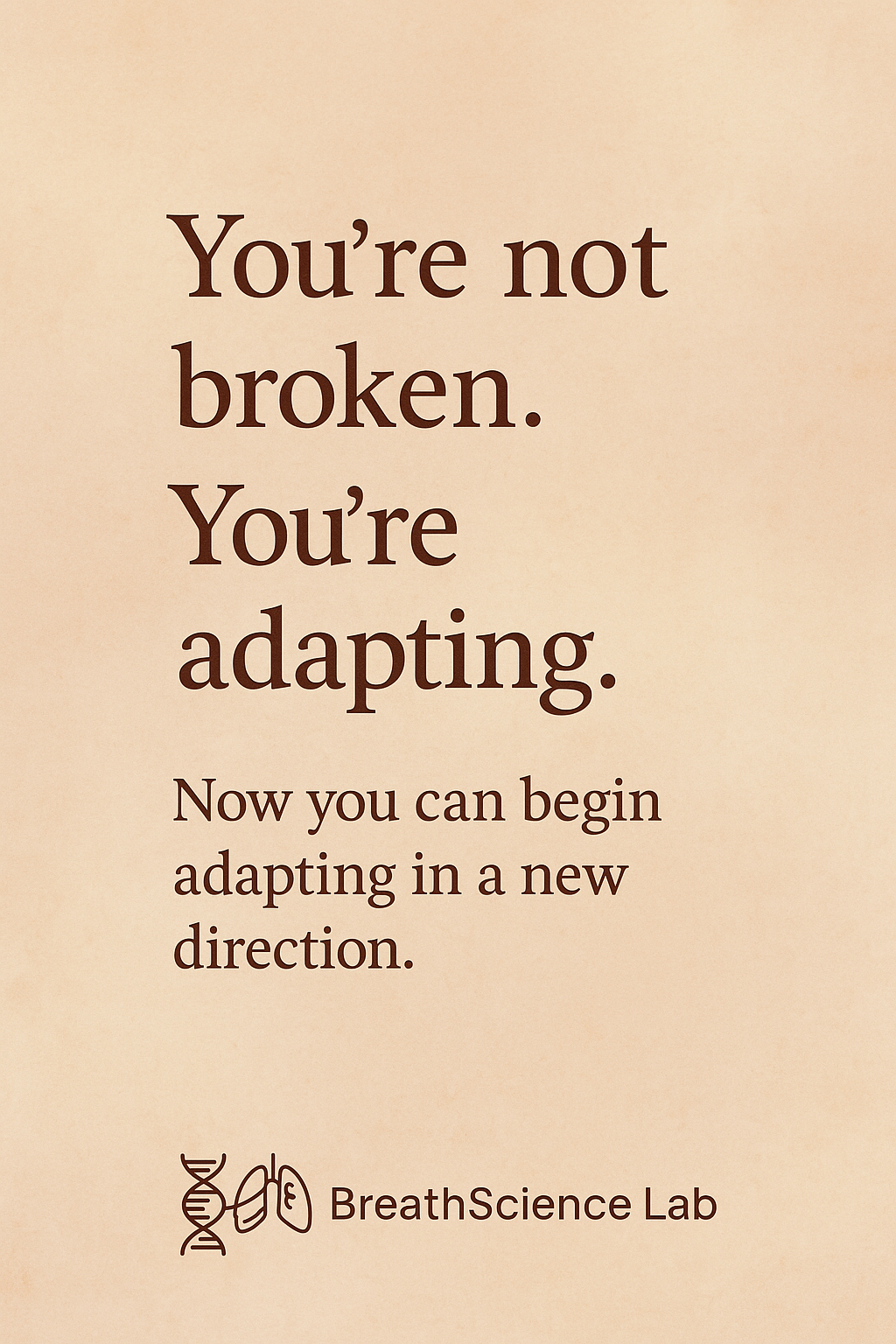The Diaphragm Dilemma: Why Breathing Exercises Make Some People Anxious
Why do breathing exercises make some people anxious? This post unpacks the hidden tension in your diaphragm—and offers a safer, trauma-informed way to start.

"Just take a deep breath" can be terrible advice for some people. Here's why—and what to do instead.
😰 Why Breathwork Can Trigger Anxiety Instead of Relief
For many, breathwork is marketed as the ultimate stress reliever. But if you've ever felt more anxious, not less, after doing breathing exercises—you’re not alone. This is more common than you think.
Common experiences include:
- A tight or tense diaphragm
- Feeling dizzy or short of breath
- Panic during breath holds
- Racing heart or intrusive thoughts
“I’ve tried a bunch of different [breathing exercises], but haven’t found any where I walk away thinking ‘that helped.’” — r/CPTSD_NSCommunity
Let’s unpack what’s going on.

🧠 The Nervous System Mismatch
Most breathwork protocols are designed to activate the parasympathetic nervous system (rest-and-digest). But if your body is in a sympathetic dominant state (fight-or-flight), trying to force calm through breathing can feel like slamming the brakes while speeding downhill (source).

Your body doesn’t feel safe slowing down yet.
Some possible contributors:
- Trauma history or emotional overwhelm
- Chronic stress patterns
- Over-sensitized vagus nerve
- Lack of CO2 tolerance (source)
🫁 The Diaphragm: A Muscle With Memory
Your diaphragm isn’t just a muscle—it’s also deeply affected by emotional and physiological stress (source).

Tension here can:
- Restrict breath flow
- Cause chest breathing dominance
- Create feedback loops of tension → shallow breath → more tension (source)
This often leads to the paradox: breathwork makes you feel worse because you’re working with a tight, protective system.
🔍 So What Can You Do Instead?

1. Start with Awareness, Not Control
Begin by noticing your breath patterns without trying to change them. Ask:
- Where do I feel my breath?
- Is my inhale or exhale longer?
- Do I feel resistance anywhere?
(Note: This approach is validated by discussions in trauma-informed breathwork communities and recommended in the strategic research) (source)
2. Skip Deep Breaths — Try Soft Breaths
Instead of forcing deep inhales, focus on gentle, quiet breathing. Soft breath is safer for an overactive nervous system (source).
3. Use Gravity-Assisted Positions
Try the "constructive rest position": lying on your back with knees bent and feet flat. This can release tension around the diaphragm (source).
4. Try Humming or Extended Exhales
- Humming stimulates the vagus nerve
- Long, slow exhales help shift into parasympathetic mode (source)
5. Build CO2 Tolerance Gently
Many anxiety responses stem from poor carbon dioxide tolerance. Use short breath holds after exhale only if they feel safe and easy.
(Source: The Oxygen Advantage, Patrick McKeown (2015))
🧘♀️ A Compassionate Breathwork Approach
The problem isn’t you. It’s that your body is trying to protect you. A breathwork practice that feels safe, gradual, and non-invasive can help restore trust between your brain, body, and breath (source).

✅ Next Steps
- Download the free Trauma-Sensitive Breath Starter Protocol (coming soon)
- Read our guide: Breathwork for Recovery: The Science Behind Parasympathetic Activation
You're not broken. You're adapting. And now, you can begin adapting in a new direction.

